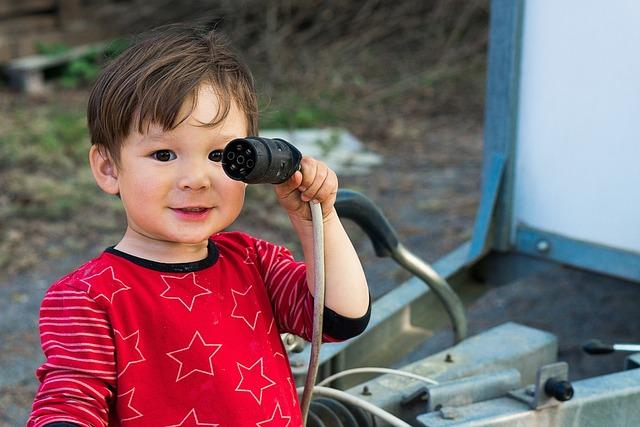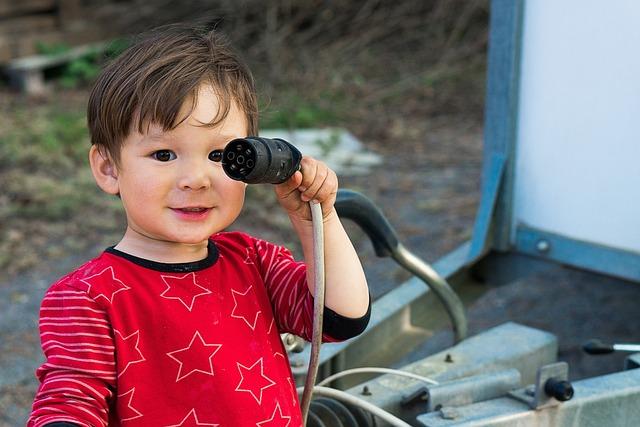When Max, a spirited golden retriever, began chewing furniture and barking incessantly, his owner, Sarah, felt overwhelmed. Desperate for a solution, she sought the help of a professional dog trainer. Through consistent training, positive reinforcement, and daily exercise, Max transformed into a well-behaved companion. Sarah learned that understanding a dog’s needs is key to correcting misbehavior. If you’re facing similar challenges, remember: with patience and the right guidance, you can turn chaos into harmony. Your dog deserves it!
Contents
- Understanding the Root Causes of Canine Misbehavior
- Effective Training Techniques to Correct Unwanted Behaviors
- Creating a Structured Environment for Positive Reinforcement
- Building a Strong Bond Through Consistent Communication and Care
- Q&A
Understanding the Root Causes of Canine Misbehavior
To effectively address canine misbehavior, it is crucial to first identify the underlying causes that may be contributing to your dog’s actions. Many pet owners overlook the fact that behavioral issues often stem from a combination of environmental, psychological, and physical factors. Understanding these root causes can pave the way for more effective training and a harmonious relationship with your furry companion.
One common reason for misbehavior is **lack of proper socialization**. Dogs that have not been exposed to various environments, people, and other animals may react fearfully or aggressively when faced with unfamiliar situations. This can lead to behaviors such as barking, growling, or even biting. Ensuring your dog has ample opportunities for positive social interactions can significantly reduce anxiety and promote good behavior.
Another significant factor is **insufficient physical and mental stimulation**. Dogs are naturally energetic and intelligent creatures that require regular exercise and mental challenges to thrive. When they are bored or under-stimulated, they may resort to destructive behaviors such as chewing furniture, digging, or excessive barking. Incorporating daily walks, playtime, and interactive toys into your dog’s routine can help channel their energy in a positive direction.
Lastly, **health issues** can also manifest as behavioral problems. Pain, discomfort, or illness can lead to changes in a dog’s behavior, making them irritable or withdrawn. Regular veterinary check-ups are essential to rule out any underlying health concerns that may be influencing your dog’s actions. By addressing these physical issues, you can create a more stable and positive environment for your pet, ultimately leading to improved behavior.
Effective Training Techniques to Correct Unwanted Behaviors
When addressing unwanted behaviors in dogs, consistency is key. Establishing a clear set of rules and sticking to them helps your dog understand what is expected. For instance, if jumping on guests is not acceptable, ensure that everyone in the household enforces this rule consistently. This uniformity prevents confusion and reinforces the desired behavior over time.
Positive reinforcement is one of the most effective methods for correcting misbehavior. Rewarding your dog with treats, praise, or playtime when they exhibit good behavior encourages them to repeat those actions. Consider the following techniques:
- Timing: Deliver rewards immediately after the desired behavior to create a strong association.
- Variety: Use different rewards to keep your dog engaged and motivated.
- Gradual Progression: Start with simple commands and gradually increase the complexity as your dog learns.
Redirecting your dog’s attention can also be an effective strategy. If your dog is engaging in unwanted behavior, such as chewing on furniture, redirect them to an appropriate toy or activity. This not only distracts them but also teaches them what is acceptable. Incorporating interactive toys or puzzle games can keep your dog mentally stimulated and reduce the likelihood of misbehavior.
patience and understanding are crucial components of effective training. Dogs may not grasp commands or behavioral expectations immediately, and frustration can hinder progress. Instead, approach training sessions with a calm demeanor and a willingness to adapt your methods. Remember, building a strong bond with your dog through trust and communication will ultimately lead to lasting behavioral changes.
Creating a Structured Environment for Positive Reinforcement
Establishing a structured environment is crucial for fostering positive behaviors in your dog. Dogs thrive on routine and consistency, which helps them understand what is expected of them. By creating a predictable daily schedule that includes feeding, walks, playtime, and training sessions, you provide your dog with a sense of security. This structure not only reduces anxiety but also encourages good behavior as your dog learns to anticipate and respond appropriately to various situations.
Incorporating designated areas for specific activities can further enhance this structured environment. For example, having a specific spot for feeding, a comfortable area for resting, and a designated space for play can help your dog associate these areas with positive experiences. **Using positive reinforcement techniques** in these spaces can reinforce desirable behaviors. When your dog engages in appropriate activities in their designated areas, reward them with treats, praise, or playtime to strengthen the connection between the environment and positive outcomes.
Consistency is key when it comes to reinforcing good behavior. Ensure that all family members are on the same page regarding rules and expectations. If one person allows the dog to jump on the couch while another discourages it, the dog may become confused about what is acceptable. **Establish clear boundaries** and communicate them effectively to your dog. This clarity will help them understand their role within the household and reduce instances of misbehavior.
be patient and observant. Every dog is unique, and understanding their individual needs and triggers is essential for effective training. **Monitor your dog’s behavior** closely and adjust your structured environment as needed. If certain situations lead to misbehavior, consider modifying the environment to minimize those triggers. By remaining attentive and adaptable, you can create a nurturing atmosphere that promotes positive reinforcement and encourages your dog to thrive.
Building a Strong Bond Through Consistent Communication and Care
Establishing a strong connection with your dog is essential for effective training and behavior correction. **Consistent communication** is key; it helps your dog understand what is expected of them. Use clear commands and maintain a calm demeanor to reinforce your messages. Dogs thrive on routine, so incorporating training sessions into your daily schedule can create a sense of stability. This consistency not only aids in learning but also builds trust between you and your furry friend.
In addition to verbal communication, **non-verbal cues** play a significant role in how your dog perceives your intentions. Pay attention to your body language and facial expressions, as dogs are highly attuned to these signals. For instance, maintaining an open posture and using gentle gestures can convey reassurance, while a tense stance may signal discomfort or frustration. By aligning your verbal and non-verbal communication, you create a more cohesive environment for your dog to learn and adapt.
Caring for your dog goes beyond basic needs; it involves nurturing their emotional well-being. **Positive reinforcement** is a powerful tool in shaping behavior. Reward your dog with treats, praise, or playtime when they exhibit desirable behavior. This not only encourages them to repeat those actions but also strengthens your bond. Remember, patience is crucial; behavioral changes take time, and celebrating small victories can keep both you and your dog motivated throughout the process.
Lastly, consider the importance of **active engagement** in your dog’s life. Regular exercise, mental stimulation, and socialization are vital components of a well-rounded routine. Engaging in activities together, such as walks, training games, or even agility courses, fosters a deeper connection. This shared experience not only helps alleviate behavioral issues but also reinforces the idea that you are a team. By prioritizing communication and care, you set the foundation for a harmonious relationship with your dog, paving the way for a happier and more obedient companion.
Q&A
-
What are the common signs of a misbehaving dog?
Misbehaving dogs often exhibit behaviors such as:
- Excessive barking
- Destructive chewing
- Jumping on people
- Not responding to commands
Recognizing these signs early can help you address issues before they escalate.
-
How can I effectively train my dog to correct bad behavior?
Effective training involves:
- Consistency in commands
- Positive reinforcement techniques
- Regular training sessions
- Patience and understanding
By reinforcing good behavior and providing clear expectations, you can guide your dog towards better habits.
-
Should I seek professional help for my dog’s behavior issues?
If your dog’s misbehavior persists despite your efforts, seeking professional help is advisable. A certified dog trainer or behaviorist can:
- Assess the underlying causes of the behavior
- Provide tailored training plans
- Offer guidance on effective techniques
Professional assistance can lead to faster and more effective results.
-
What role does socialization play in correcting misbehavior?
Socialization is crucial in preventing and correcting misbehavior. It helps your dog:
- Become comfortable in various environments
- Interact positively with other dogs and people
- Reduce anxiety and fear-based behaviors
Investing time in socializing your dog can significantly improve their behavior and overall well-being.
addressing a misbehaving dog requires patience, consistency, and understanding. By implementing effective training techniques and fostering a strong bond, you can transform your dog’s behavior and enhance your relationship. Start today for a happier, well-behaved companion!




